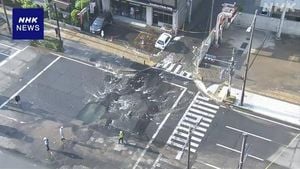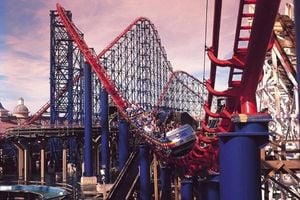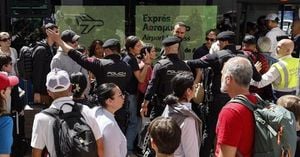New York City is gearing up for its much-anticipated India Day Parade, marking its 42nd celebration this Sunday.
Set to kick off at noon, the parade promises to be a vibrant spectacle.
According to the Federation of Indian Associations, attendees can expect to see over 40 floats, more than 50 marching groups, and around 30 marching bands.
Adding to the star power of the event, acclaimed Indian actress Sonakshi Sinha will serve as the grand marshal.
Guests of honor include well-loved Indian actor Pankaj Tripathi and popular Bhojpuri superstar Manoj Tiwari.
The festivities won’t just stop at the parade; there will be cultural performances and food from over 45 vendors at the festival.
The parade route will stretch down Madison Avenue from East 38th Street to East 27th Street, making it quite accessible for spectators.
For those eager to enjoy cultural performances, there’s designated viewing from the audience area on East 25th Street.
Food vendors and exhibition booths will be available on East 26th Street, providing plenty of delights for attendees.
While the parade is largely festive, it hasn’t been without its share of controversy.
A float representing the Ram Mandir, which symbolizes the Hindu temple built on the site of the demolished Babri Masjid, has garnered backlash.
Critics, including the Indian American Muslim Council, argue this float glorifies violence against Muslims, calling for its removal.
They assert the temple symbolizes the destruction of mosques and underscores religious violence within India.
Despite the outcry, parade organizers have stood firm, insisting the float celebrates the inauguration of a significant Hindu landmark.
They argue it holds deep meaning for millions of Hindus and is part of the cultural expression celebrated at the parade.
This year’s India Day Parade merges cultural pride and celebration of diversity with complex socio-religious themes.
New Yorkers, potentially facing street closures, are adjusting their plans accordingly.
Several streets will be closed to accommodate the parade and festival activities.
Streets affected include 37th and 38th Streets between Park Avenue and 5th Avenue, along with parts of Madison Avenue and 26th Street.
The planning aims to minimize disruption, ensuring smooth proceedings for both the parade participants and local businesses.
Each year, the event fosters community spirit, allowing diverse cultures to shine through traditional dance, music, and food.
Participants and local businesses unite, celebrating heritage, unity, and the essence of India.
Different expressions of culture are showcased through parading floats, vibrant costumes, and energetic performances, making it appealing to attendees from all backgrounds.
The celebration provides newcomers and residents alike with insights on India’s rich traditions.
While the festive atmosphere reigns, the undercurrents of current events add another layer to the occasion.
Many participants view the float as not merely celebratory but also as reflective of their homeland’s contentious history.
The juxtaposition between celebration and controversy reflects broader tensions within both the community and international relations.
Still, the parade aims to channel positive energy and bring together people to celebrate Indian culture cohesively.
Absorbing the local cultural vibrancy and shared experiences, emerging artists and local businesses find their space at the festival.
The evening culmination promises colorful displays, joyful reunions, and lively community bonding.
A celebratory spirit infuses the atmosphere, enabling people to reconnect amid New York City’s urban backdrop.
Many hope the parade will serve as not only entertainment but also as dialogue, breathing life to numerous conversations on cultural identity.
The running of the India Day Parade continues to be pivotal in bridging gaps between communities.
It extends beyond the festivities and serves as a courageous reclamation of identity by Indian expatriates and their descendants.
Looking at the future, what role will such celebrations play within New York’s multicultural environment?
Whether the focus shifts more toward inclusivity or steering away from politically charged topics remains to be seen.
Already, this event has received national attention and debates about cultural representations are continuously developing.
It marks not just celebration but also acknowledgment of diverse narratives molded over history.
With tomorrow’s event fast approaching, both celebrants and protestors are preparing for lively expressions of identity and culture.
Despite any conflicts, many hope the upcoming festivities will pave the way for interconnectedness and mutual respect among all attendees.
Expectations are high for performances, speeches, and the free-flowing spirit of the day.
Even so, they also urge vigilance toward the larger social conversations at play and how celebrations can catalyze change.



